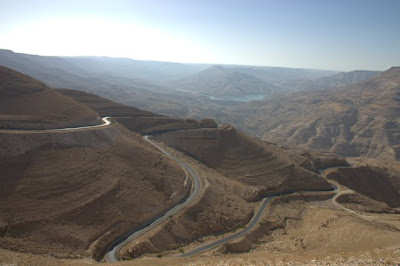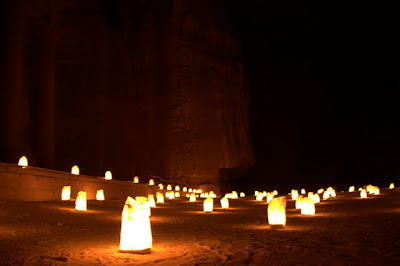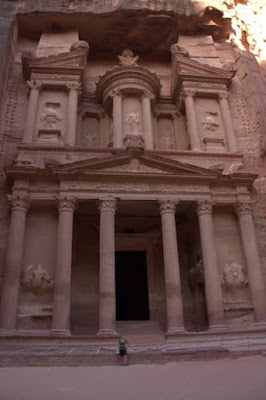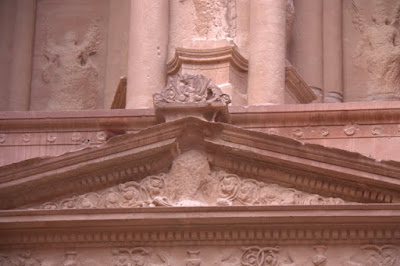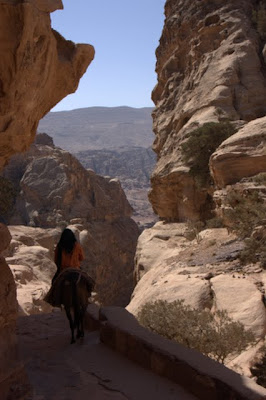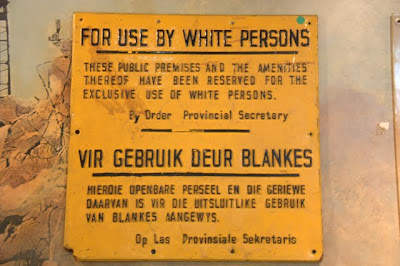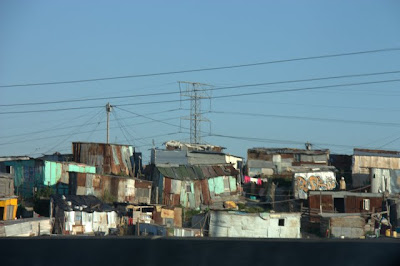Riding Down King’s Highway
I’ll admit it; the main reason I wanted to take the long way from Madaba to Wadi Musa down the King’s Highway was because King’s Highway is one of my most favorite songs. I’m pretty sure one has nothing to do with another, officially, but unofficially, they are linked in my mind. This was a song I listened to quite frequently when daydreaming about the trip, long before I even knew there was a King’s Highway in Jordan or that I’d someday ride down it.
When the time gets right
I’m gonna pick you up
And take you far way from trouble my love
Under a big ol’ sky
Out in a field of green
There’s gotta be something left for us to believeOh, I await the day
Good fortune comes our way
And we ride down the Kings HighwayNo you can’t hide out
In a six gun town
We wanna hold our heads up, but we gotta stay down
I don’t wanna end up
In a room all alone
Don’t wanna end up someone that I don’t even knowLover, I await the day
Good fortune comes our way
And we ride down the Kings Highway– King’s Highway, Tom Petty
Sean and Amy Do Petra.
One of our main reasons for visiting Jordan – really, everyone’s main reason for visiting Jordan – was to go to Petra. Petra is an ancient city carved into red-rose rock. It was established sometime around 6 B.C. by the Nabatean people. Petra is a UNESCO World Heritage Site and one of the New Seven Wonders of the World. Visiting Petra, like much of Jordan, was totally Sean’s thing and not mine, but it turned out to be pretty cool.
The most famous building, and the first one you see upon entrance, is the Treasury. You may remember the Treasury from the Indiana Jones and the Last Crusade; it is the building holding the Holy Grail at the end of the movie. (Which we know is a fiction, because we saw the Holy Grail in the Cathedral in Valencia!)
Before you get to see the Treasury, you first have to walk about a mile back into the city flanked on either side by towering red rock formations. We caught our first sight of the Treasury by candlelight. On our first night, we joined a couple hundred people in the tour back to the Treasury. The candlelight gave enough light only to give a sense of the towering rocks surrounding us.
The next morning, we woke up early and ventured in again. This time, we could see just how large the rocks lining the path are.
You walk, and walk, and walk, and finally, through a crack in the rocks, you get the big reveal. In between the rock formations, you see a hint of the Treasury peeking through.
It isn’t until you get all the way through the rock formation path, however, that you truly can take stock of the Treasury and all of its grandeur. It is a huge building, as you can tell from this picture of me standing in front of it. It is carved into the rock with such detail that you can hardly believe that humans could have done this, by hand.
Besides the Treasury, there are other buildings and things carved into the stones, such as the amphitheatre and tombs. Sean convinced me to engage in one of my least favorite activities – walking up steps. Over 800 steps, to be more precise. You could hire hand-led donkeys to take you up the narrow steep pathway, but if I was going to fall off this mountain, I was going to do it on my own accord.
The destination was Petra’s second grandest building, the Monastery, which was located at the top of a steep hillside. As I trudged up the hill, soaked with sweat, with the morning sun now beating down without relief, I was reminded of my failure to “summit” a similar hillside in the heat in Morocco. This time, I was determined to make it to the top. We kept seeing the same two elderly women chugging along. Although I felt pathetic to use their progress as a benchmark, I was pleased that at the very least, we beat them to the top, where the Monastery stands just as tall and grand as the Treasury.
Although the buildings are what earned Petra its acclaim, the rocks themselves fascinated me just as much. Their red-rosy glow earned Petra the nickname of the Red Rose City. In certain areas, the rosey rocks swirl into beautiful blues and purples. It is gorgeous.
If you go: We stayed at the Sun Set Hotel, a no-frills budget hotel with wifi in the lobby within walking distance to restaurants and Petra. It was nice not to have to rely on transport to get to Petra, and it allowed us to get up early to see Petra before it got too crowded and before the sun got too hot. We spent 2 nights in Wadi Musa, and thought 6 or 7 hours was enough to see everything we wanted to see. If you are interested in seeing everything in Petra, you will want to allot at least two days. When they say that you will do a lot of walking, they are not lying – you will do A LOT of walking. And it will be hot. Water is readily available to replenish your supply in Petra, even at the top of the mountain with the Monastery. You will need it. Be prepared for the sticker shock of Petra’s price. It is now 33 Jordanian dinars – about $46 USD. In November, it is going up to a shocking 50 JD – about $70.60 USD. Not too long ago, it was only 15 JD/21 USD. Petra is definitely a special place that deserves to be visited, and I am sure that there are continuing research and archaeological costs, but paying $70 to get in seems extreme. What is extra frustrating about the price increases is that it does not seem like any of the money is going back in to improve the attraction for the tourists that support it. Most of the few bathrooms inside are basically porta-potties, and many of the paths are not in good repair. I don’t expect Petra to be in perfect condition, considering it is an ancient city, but I expect some basic improvements if I am paying $50 or $70 for something that formerly cost $21.
Hello to Fellow Fighters
If you’ve come from 1000 Places to Fight Before you Die, welcome! Mike and Luci, who tell what it is really like to travel as a couple on their blog, very kindly re-posted SurroundedbytheSound’s most recent blog post about race in South Africa over on their site. Mike and Luci also recently traveled through South Africa. They posted about their visit to Soweto Township, a place we didn’t get to visit, and about South Africa’s neighboring country, Swaziland, another place we would have liked to have seen but didn’t get a chance to. If you’ve never visited 1000 Places to Fight Before you Die, check it out!
Observations about Race in South Africa
I can’t help but always take note of race; it is a byproduct of being an employment discrimination lawyer, I suppose, where I was paid to analyze issues in racial terms. (And to my friend Tony – yes, I am mentioning race because it is relevant here).
Shortly before we traveled to South Africa, Karen Waldrond, one of my favorite writers and photographers, who I’ve mentioned recently, wrote that she believes that everyone should spend an extended amount of time outside of their home country, in a place where they are a visible member of the minority class at least once in their lifetime. I thought of her words while we were in South Africa. The percentage of blacks and whites in South Africa and the United States are roughly flipped: 79% of the population in South Africa are black, and 9.5% are white. 75% of the population in the United States are white, and 12.4% are black. (Of course, I realize the issue of race is more complex than black and white, but I am focusing upon the biggest majority group in each country). Early on in our trip, we walked into a crowded department store off of Long Street, a trendy street in downtown Cape Town, and realized we were the only white people in the store. This experience repeated itself again and again during our month in the country.
Being in the minority kept race on the forefront of my mind. Even more than that, the relatively recent fall of apartheid made it impossible to travel throughout South Africa without thinking about race. Like many of the other countries we have traveled through that have gone through significant historical transformations, it was fascinating to learn about what life was like before and what life was like now.
Apartheid – literally the state of being separate – was similar to segregation and Jim Crow laws in the United States, but much, much more extreme. And its official demise was only 16 years ago. Which means that during our lifetimes, blacks lived without the same rights as whites. And now blacks live with the same rights as whites, at least legally.
At the District Six Museum in Cape Town, we learned about the forced removal of 60,000 people from a neighborhood during apartheid. On our trip to Robben Island, the island where Nelson Mandela was imprisoned for 18 years, we learned a little about what prison was like directly from a former political prisoner. The most informative experience, by far, was the Apartheid Museum in Johannesburg. We’ve been to a lot of museums on this trip, and I felt this museum was the most educational and organized out of any of the ones we have visited. What I liked best was that you could choose to only read a brief overview of each section, or delve into the details should you so choose. The museum also packed an emotional impact just by presenting neutral facts. You are randomly assigned a race as you enter. I was white. Sean was “coloured” (a racial category used for people of mixed race that had more rights than blacks but much fewer rights than whites). This meant we were separated upon entrance and each had different experiences in the beginning of the museum. When we left the museum, together, we could peek back through a slit to see the entry point, where the races were separate. A reminder about how far the country has come.
The seven pillars of South Africa's current constitution displayed outside the Apartheid Museum: democracy, equality, reconciliation, diversity, responsibility, respect and freedom.
Renewing my education about apartheid made me scrutinize race relations much more closely than normal. I’ve read that the biggest issue today is the drastic differences between the haves and the have nots, and not the relations between the races.
This may be true, but I didn’t see any white people living in the townships and shantytowns on the outskirts of almost every city and town we drove through. At the beginning of our trip, it seemed like all of the owners, managers and patrons were white in all of the places where we stayed and ate, but the staff was black. Most of the suburban enclaves we saw were white, with the exception of maids. The rural, poorer towns we drove through had all black inhabitants. It wasn’t until East London and further north that we saw more upscale neighborhoods full of black people living and eating there. Finally, one of the B&Bs where we stayed was owned by a black person. But in these more upscale neighborhoods, we still didn’t see much integration between blacks and whites. In Johannesburg, we finally saw much more diversity. One of the places where we noticed this the most was at a secure suburban mall, where people of every race and color shopped and hung out.
Like crime, race is a sensitive topic in South Africa, so I only have my observations to go on. I always have the feeling that any observations are incomplete, and can only help facilitate learning more instead of being the final say on any particular topic when I travel. I’m not sure what all of my observations mean, but my suspicions are that the society has come a long way, but progress is slow. The fall of apartheid means that both a black and white cop can stand together and demand a bribe from two white people in lieu of a speeding ticket – thank goodness for progress, right? – but the effects of years of discrimination, oppression, and violence can’t be erased overnight or even in 16 years.
On Sprawl and Security
When people talk about South Africa being a beautiful country, they are talking about the natural beauty. After leaving architecturally rich Europe, it was quite a change to see squat, modern buildings radiating out without planning or foresight. In some ways, South Africa reminded us most of the United States out of all of the countries we’ve visited so far. The shopping malls, the need for a car, the suburban sprawl – it is all too familiar. But the sprawl in South Africa is more extreme, and what was quite different than home was the level of security. There are bars on the windows of McDonalds, even in a decent neighborhood. There are parking attendants on public streets and in private lots. Homes – and most of the guesthouses, backpackers, and B&Bs where we stayed – are hidden away in the suburbs behind tall concrete walls with coded gates and topped with electric fences. Particularly in Johannesburg, stores and restaurants – even grocery stores – are not located at street level. Instead, they are segregated away in shopping malls with pay lots. At home, you might see advertisements for home security systems, the type that might include a service to call the police if something goes amiss. In South Africa, you see advertisements for armed security, who promise to respond in minutes if there is a problem. At home, if we saw bars on the windows, we would assume we were in a bad area. In South Africa, the more bars, the better the neighborhood.
Compounding the over the top security is the way the country shuts down after dark (with the exception of Cape Town). Malls, stores, and grocery stores close shortly thereafter and people disappear from the streets. Many of the backpackers (hostels) are self-contained, serving dinner and alcohol so you don’t need to go out at night. Cars leave the roads (although we heard this is because there are few street lights and lots of people and animals roaming about). Towns would empty of the loiterers who had been hanging out doing nothing in the afternoons. It was winter while we were there, so it got dark around 6 p.m. We had a car, so we still typically went out to eat after dark (otherwise we would be taking early bird specials to the extreme), but we still were left with a lot of free time in the evenings. South Africans’ tendency to scurry inside as night falls was a strange thing to get used to after being in Europe, where we often wouldn’t venture out for dinner until 8 or 9 (even later in Spain).
All of the electric fences, security gates, and bars on windows made us recall some of the advice we had heard before we arrived. Shortly before we came to South Africa, we stayed at a B&B in Northern Ireland with an owner who was originally from Durban, South Africa. When she found out we were going to South Africa next, she gave us some advice. (1) Don’t wear lots of jewelry, she said, glancing at my necklace. (2) Always, always, always lock everything in your boot (trunk) and don’t leave anything in your car, even when you are in it. (3) In certain areas, you may need to run the robot (traffic light) instead of stopping. She went on to tell us about smash’n’grabs – when someone breaks your car window while you are stopped, reaches into the car, and grabs your things. She told us it had happened to her last time she was home. Someone reached in her car window and grabbed her purse right off her lap. She described how she chased him down because she was so mad something had been stolen from her again. The week before, someone had stolen her cell phone right of her pocket. By the time she was telling us about how credit cards charge people money to get a replacement card because everyone’s cards get stolen and not to feel sorry for the little kids who are sniffing glue and begging you for money, I was wondering what in the hell we were getting ourselves into. I know people can be alarmists, but this was someone from South Africa telling us it was bad.
What we were never able to figure out in our month in the country was whether the heightened security was a necessity, or part of a long ingrained culture of fear. Instead of making us feel safer, all of the security made us feel like we constantly needed to be on guard. I knew that an unfortunate side effect to the dismantling of apartheid is the development of one of the highest levels of crime in the world – most notably, violent crime. But I never could get a good read on how bad the crime really is. I don’t know whether the crime is indiscriminate, or maybe just confined to certain subsets of the population and to certain areas. Obviously nothing happened to us while we were there, and we didn’t see any crimes occur. And thousands of people travel to South Africa without incident. Honestly, if the security measures all around us hadn’t provided constant reminders, I probably wouldn’t have worried about crime at all.
While I loved the country, it is not a country in which I would ever chose to live. We certainly felt more at ease after our first day or so, but it is hard when you have constant reminders of what could take place. I would hate to live my life, sheltered away in a suburb, constantly looking behind you, as you drive from your fenced in home to the local mall to go grocery shopping. I don’t know. Maybe people who live there are more at ease and it is not that extreme for them. I would love to understand more about what it is really like for people who live there. Crime is a sensitive subject, especially in South Africa, because it is intertwined with race and apartheid and the haves and have nots, so it tended not to come up in conversation. Even when we tried to inquire with our accommodations about whether the area was safe to walk around, the answers were evasive and coy. We were always just given reminders to use standard precautions and to “be smart.”
Don’t get me wrong: we really loved our time in South Africa. Despite creation of my own jitters at times, I never felt unsafe, and I personally would not hesitate to travel there again. But for the foreseeable future, fear of crime is an unfortunate backdrop to any travels there.
